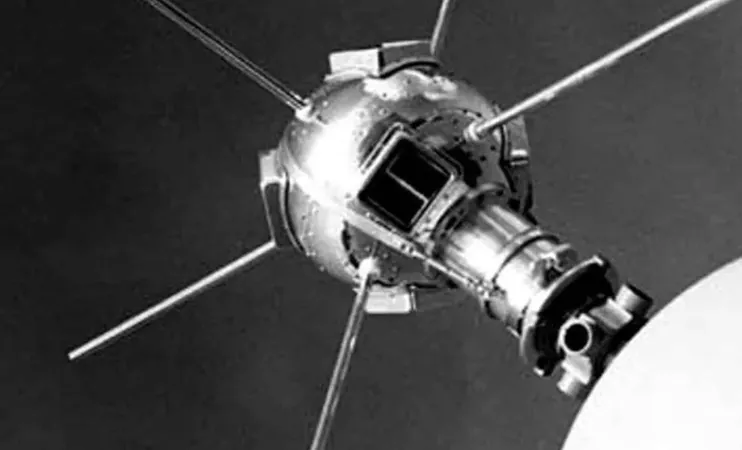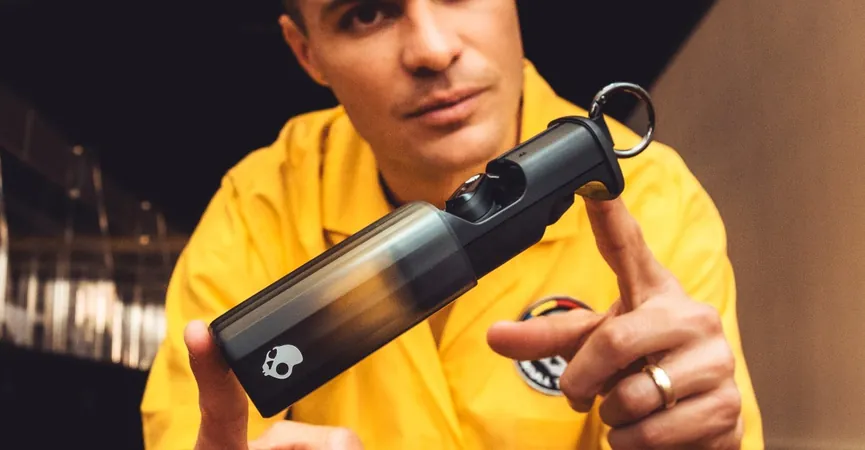
Is the World’s Oldest Satellite Ready for a Heroic Return to Earth After 67 Years?
2025-04-12
Author: Kai
A Space Age Relic Yearning for Home
Launched in 1958, Vanguard 1 has quietly orbited Earth for decades, making it the oldest human-made satellite still out there. Now, a determined group of scientists and aerospace historians is plotting an audacious mission to bring this iconic piece of technology back to Earth—marking what could be the first-ever retrieval of a satellite after so many years in space.
Birth of a Legend During the Space Race
Vanguard 1 made its debut on March 17, 1958, just months after the Soviet Union’s Sputnik 1 sent shockwaves across the globe. Despite a rocky start and a previous failed launch, the successful deployment of Vanguard 1 helped restore American prestige during the intense early days of the Space Race. This tiny satellite, weighing a mere 3 pounds, was revolutionary—it was the first to harness solar power, paving the way for the future of satellite technology.
From Orbit to Museum: A Bold New Proposal
A recent proposal by aerospace analyst Matt Bille aims to make the impossible possible. Though lacking official backing from any space agency, this initiative has ignited interest among scientific circles, highlighting its historical and scientific importance. "Retrieving Vanguard 1 would present a significant challenge, but it’s an achievable endeavor that would benefit the entire U.S. space community," Bille stated.
Mapping Out the Mission
The recovery mission is envisioned in two phases. Initially, a spacecraft would be sent to closely image Vanguard 1, assessing its condition and location. Following this, if conditions permit, a retrieval spacecraft could be launched to bring it home, possibly via the International Space Station. Imagine Vanguard 1 on display at the Smithsonian's National Air and Space Museum—an inspiring relic of humanity's early forays into space.
The Ultimate Scientific Time Capsule
Vanguard 1’s value goes beyond nostalgia; it serves as a rare opportunity to study the long-term effects of space on early technology. Its structure and solar components have faced relentless exposure to cosmic radiation and tiny debris for over six decades. Researchers hope to unravel how these factors have impacted the satellite’s components, providing invaluable data about our technological heritage.
A Mission in Need of a Champion
However, the mission won’t succeed without a financial champion. Space enthusiasts speculate that a private funder with a passion for history could spearhead this venture—think of iconic figures like Jared Isaacman of SpaceX or Jeff Bezos, who has previously funded extraordinary recovery missions.





 Brasil (PT)
Brasil (PT)
 Canada (EN)
Canada (EN)
 Chile (ES)
Chile (ES)
 Česko (CS)
Česko (CS)
 대한민국 (KO)
대한민국 (KO)
 España (ES)
España (ES)
 France (FR)
France (FR)
 Hong Kong (EN)
Hong Kong (EN)
 Italia (IT)
Italia (IT)
 日本 (JA)
日本 (JA)
 Magyarország (HU)
Magyarország (HU)
 Norge (NO)
Norge (NO)
 Polska (PL)
Polska (PL)
 Schweiz (DE)
Schweiz (DE)
 Singapore (EN)
Singapore (EN)
 Sverige (SV)
Sverige (SV)
 Suomi (FI)
Suomi (FI)
 Türkiye (TR)
Türkiye (TR)
 الإمارات العربية المتحدة (AR)
الإمارات العربية المتحدة (AR)